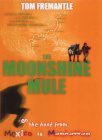Azores Express has announced expanded Spring and Summer service from Boston Logan Airport to Portugal beginning in June 2004. Azores Express will offer direct flights to São Miguel, the main island in the Azores archipelago, on Wednesdays (starts June 23rd), Tuesdays, and Fridays. A Saturday flight is offered from Providence, Rhode Island starting June 12, 2004.
The Azores Islands, an autonomous region of Portugal, are the closest point in Europe to the United States, just four hours east by plane from Boston.
Situated 2,000 nautical miles from New England, the archipelago of the Azores was discovered during the first half of the 15th-century by Portuguese navigators. Today, gothic churches and majestic baroque manor homes mingle with sapphire blue and emerald green lakes, rolling prairies, volcanic cones and craters, and colourful hydrangeas and azaleas to enchant visitors. This inviting land enjoys year-round mild temperatures (between 57°F and 71°F).
A direct service from Boston to the historic island of Terceira will be offered on Sundays starting June 13th with a return flight every Tuesday. Non-stop flights to Portugal’s capital of Lisbon will be available every Thursday (starts June 24) and Sunday (starts June 6). Connecting flights to Madeira, Lisbon and Porto are also available from São Miguel. Inter-island flights are offered to each of the nine islands in the Azores. Roundtrip airfares start at just $579. Upgrades to business-class are just $150 each way to the Azores, and $200 each way to Lisbon. For more information and reservations, contact your travel agent, or Azores Express at 800-762-9995, www.Azores-Express.com.
Discus this article and give feedback in our online forum

